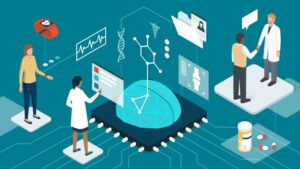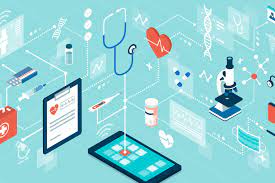Data Science for Health

Across all fields, data is being collected and accumulated at a vivid pace. In healthcare, usable data has proliferated as a result of the collection of data from various sources, including electronic health records, wearable technologies, research in drug development, and the impact of ongoing disease spreading. The increased adoption and availability of these health resources and the increase of computational power have presented a major opportunity in healthcare for both discovery and practical applications. The promise of Artificial Intelligence to improve patient care and public health is tightly coupled to the availability of these relevant data. The use of AI in health can improve diagnosis and clinical care, enhance health research and assist in the deployment of different public health interventions, such as disease surveillance and outbreak response. My main methods of interest include clustering for patient Electronic Health Record (EHR) patient phenotyping and Reinforcement Learning for personalization and decision making.
Electronic Health Records

EHRs have provided unique opportunities not only for monitoring patients but also for their secondary use in support of clinical and medical research . An EHR may consist of structured data (e.g., medication and diagnoses codes, laboratory results and patient demographics), or unstructured clinical notes (e.g., patient and family history, present illness, discharge summaries or clinical interviews). One of the fundamental uses of EHRs is identifying patients that share similar disease characteristics (either exposures or outcomes) via a method known as electronic phenotyping. Phenotyping may be as simple as grouping patients with similar disease characteristics, such as type II diabetes, or far more complicated, referring to the process of identifying groups of patients with a specific disease without evidence of that disease. Discovering fine-grained disease/patient clusters will help in the systematic examination of diseases and comorbidities for associations with specific conditions and improve risk assessment in a population level. The potential insights that might result from these groups of patients can help to establish personalization in a population level and improve patient care.
Public Health and Disease Modelling
Public he alth surveillance can expand from monitoring patients on a population level using their health data, to disease outbreak response utilizing epidemiological models. When an epidemic or pandemic occurs, public health officials need to analyze a number of complex scenarios and variables to decide which interventions could reduce or contain the disease spread. Stringent control measures, such as school closures and stay-at-home orders, while having significant effects in terms of limiting the disease’s spread, can also bring huge economic losses and ramifications in the general well-being of the population. AI in such scenarios can be proven to be an invaluable tool as it can be used to conduct decision-making that can aid disease surveillance and facilitate outbreak response while balancing complex multi-objective problems.
alth surveillance can expand from monitoring patients on a population level using their health data, to disease outbreak response utilizing epidemiological models. When an epidemic or pandemic occurs, public health officials need to analyze a number of complex scenarios and variables to decide which interventions could reduce or contain the disease spread. Stringent control measures, such as school closures and stay-at-home orders, while having significant effects in terms of limiting the disease’s spread, can also bring huge economic losses and ramifications in the general well-being of the population. AI in such scenarios can be proven to be an invaluable tool as it can be used to conduct decision-making that can aid disease surveillance and facilitate outbreak response while balancing complex multi-objective problems.